Mount Kailash, standing majestically in the remote Tibetan Himalayas, is more than just a geographical wonder. It has been a spiritual center for Hindus, Buddhists, Jains, and Bon followers for centuries. The pilgrimage to Kailash, also known as the Kailash Mansarovar Yatra, is a lifelong dream for many pilgrims who believe that it brings spiritual purification and enlightenment. During the Kailash Yatra, the devotees make a round around this sacred giant, which is called Kailash Kora/Kailash Parikrama.
While the Outer Kora is famous and participated in the most among the pilgrims, there exists a more intense and sacred path called the Inner Kora. It is a 32 KM route that is lesser known but is deeply spiritual, as one can touch the base of Mount Kailash. It is believed to be the path towards liberation (moksha). Given that, this blog about the Kailash Inner Kora acts as a virtual companion to inspire and motivate the pilgrims to participate in this challenging yet profoundly rewarding journey. It highlights the significance of Inner Kora in different ways, attractions along the way to Kora, routes to the Kora, and the challenges of the yatra to acknowledge those who are interested in this yatra.
Listen To Our Podcast: Kailash Inner and Outer Kora
Kailash Inner Kora Facts
Here are some facts related to the Kailash Inner Kora:
|
Location |
Tibet |
|
Kora Distance |
32 KM |
|
Duration |
3 Days |
|
Difficulty |
Strenuous |
|
Average Altitude |
5000 m |
|
Major Attractions |
|
|
Kora Start Point |
Darchen |
|
Kora End Point |
Darchen |
What is Kailash Inner Kora?
How do you think devotees or pilgrims define their faith or beliefs towards their gods? The Kailash Inner Kora, a journey of immense spiritual significance among various religions, is a way one can express their unwavering faith to the sacred giant, Mount Kailash (6638 m). Kailash Inner Kora is a 32 KM journey where pilgrims of various religions encircle Mount Kailash as a spiritual practice, which is believed to purify the soul and help one achieve liberation. It can be completed in about 3 days, crossing the formidable Sanglam la pass at an elevation of about 5680 m.
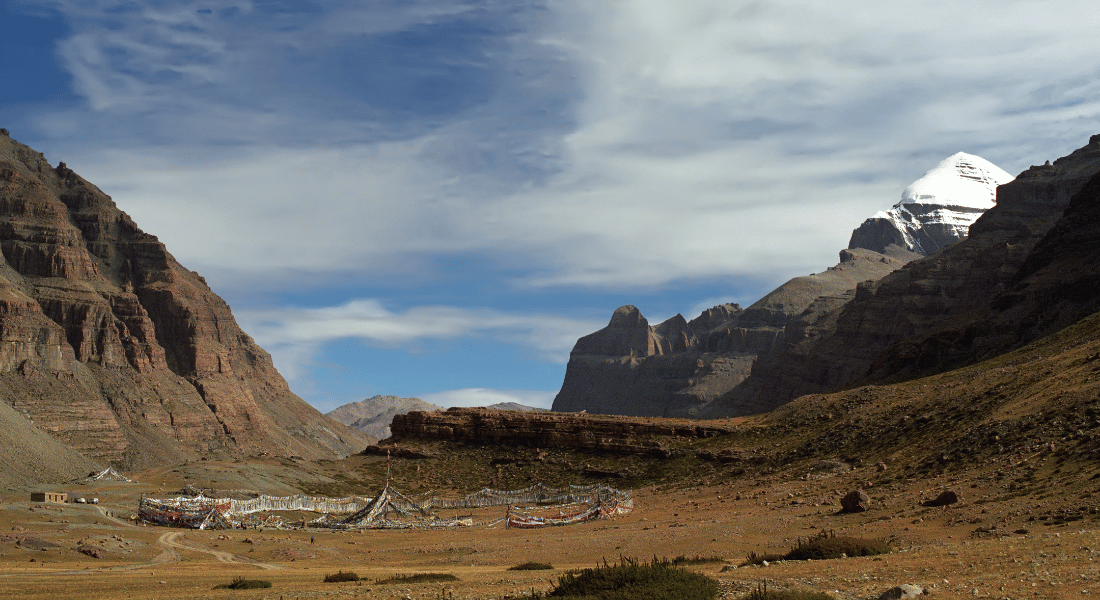
Just standing before the holy Mount Kailash is a great feat, as this almighty is revered among Hindus, Buddhists, Jains, and Bon followers. However, the Kailash Inner Kora takes you closer to this mountain, not to mention touching its feet, which is called Charan Sparsh. One of the significant aspects of this Kora is the opportunity for “Charan Saparsh”, the ritual of touching the mountain's feet, which is considered a deeply spiritual act.
Apart from a pilgrimage, the Inner Kora route is also a physical feat for most of the pilgrims. The isolated routes and extreme altitudes makes the path suited for highly experienced or deeply spiritual pilgrims only. Also, what adds to its difficulty is the condition of the route, which is not well marked, most of it being remote. However, the challenge is often overlooked with its unparalleled spiritual fulfillment which remain a cherished aspiration for many.
Also Read: Kailash Mansarovar Yatra
Kailash Inner Kora Significance
The Kailash-Mansarovar region is renowned for its spiritual environment set against the majestic backdrops of the sacred Mount Kailash and holy Lake Mansarovar. Which is why the revered parikrama/kora performed in this vicinity is considered highly significant. The inner kora is much more related to the spiritual, personal, and cultural importance it presents. Some details of it are given below:
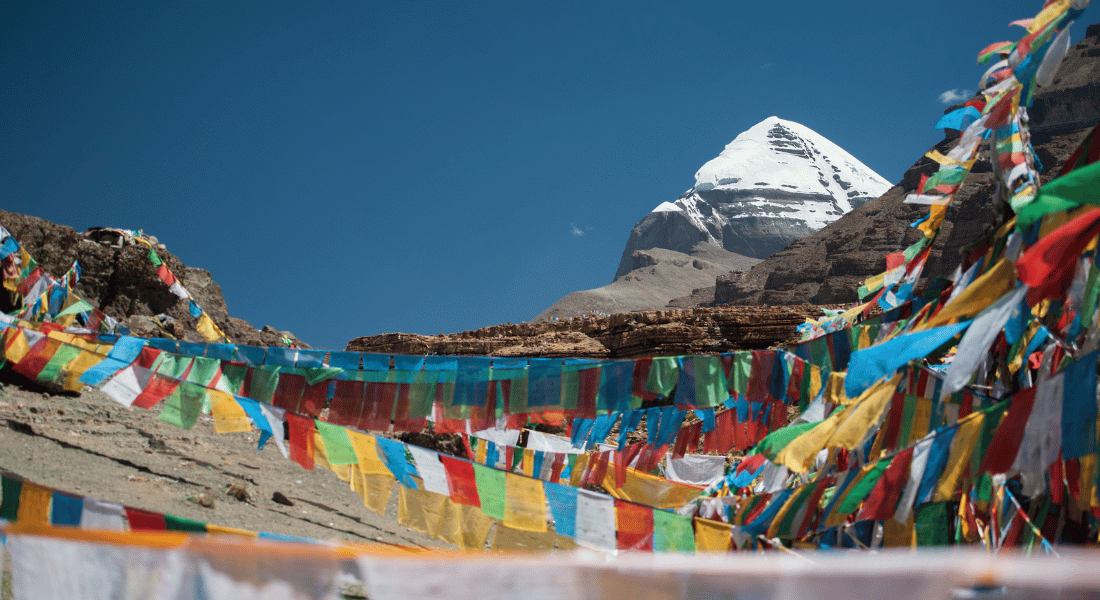
Spiritual
Mount Kailash, the holy abode of Lord Shiva, is worshipped among the Hindus, Buddhists, Jains, and Bon followers for the divinity it has. And doing the parikrama is believed to free an individual from their sin of life. Even more important is the inner parikrama, which lets you touch the feet of the mount, called the Charan Sparsh. Pilgrims often view the difficulties faced during the yatra as something one must overcome on their path to spiritual liberation.
Personal
Despite the route being more physically challenging than the Kailash outer kora, pilgrims attempt this journey, which shows their deep devotion towards their deities. It not only helps them benefit spiritually but also increases their endurance and capabilities. The pilgrimage forces one to face their fears, weaknesses, and limitations, resulting in both physical and mental growth.
Cultural
As the path is not only about the journey one takes, but also the various stops made in different sites, there are various things to learn and see culturally. Majorly, the aspects of Tibetan culture where pilgrims encounter local Tibetan communities, monasteries, and spiritual practices along the route. Moreover, as the yatra involves people coming from various cultural backgrounds and beliefs, there are many opportunities to communicate and exchange each other's cultures, which is a great opportunity for pilgrims with cultural interests.
Highlights of Kailash Inner Kora
The inner Kora route attracts one with its untamed beauty, raw landscapes, unexplored routes, and many highlights along the way. Despite the strenuous journey, these highlights along the way make your pilgrimage highly rewarding. These highlights are:
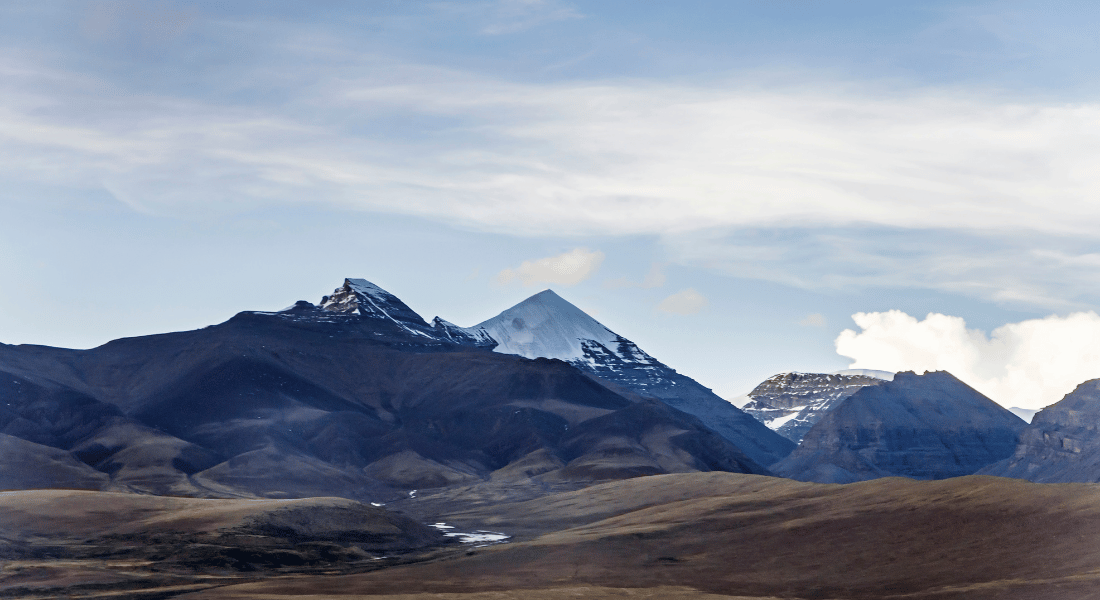
Mount Kailash
At an elevation of about 6638 m, Mount Kailash stands glorious as the pride of Tibet, which is more than just a natural beauty. It signifies itself as a holy mountain to the pilgrims, with them believing in its connection with Lord Shiva in Hinduism, Demchok in Buddhism, Rishabhadeva in Jainism, and the spiritual home of the Bonpo founder, Tonpa Shenrab Miwoche. Pilgrims participate in the sacred Kailash Mansarovar Yatra to make a round to this almighty, which is believed to cleanse one's sin of life and attain liberation.
Learn More: Mount Kailash
Asthapad
Located at an elevation of about 4900 m, is an important site on the Kailash journey. Regarded as the religious site of Jain, the first Trinthankara, Rishavdeva is believed to have attained liberation in this peak. This site is marked by a series of stone structures and the spiritual atmosphere that attracts those seeking deeper connection with the divine.
Saptarishi Cave
Spatarishi Cave is one of the important sites during the Kailash Inner Kora at an elevation of about 5800 m, considered the hardest part of the journey. The cave is named after the Saptarishi or Seven Sages, who are believed to have meditated here in ancient times. The sages, also known as the followers of Lord Shiva, are said to have achieved enlightenment through their spiritual practices at this site.
13 Golden Chortnes
This significant site is a set of stupas, just outside the Saptarishi cave. These chortens are said to symbolize the teachings of Buddhism, where each chorten represents a different aspect of Buddhist teachings, such as wisdom, compassion, and others.
Charan Sparsh
Charan Sparsh, rather an act of devotion, is one of the major highlights of this journey, which means touching the feet of the holy mount Kailash. Doing this spiritual act lets pilgrims express their deep devotion and respect for the Lord Shiva, who is believed to reside in this mountain. To perform this ritual in Mount Kailash means showing devotion towards Lord Shiva, acknowledging his supreme power and wisdom.
Learn More: Kailash Charan Sparsh
Kailash Inner Kora Route
The Kailash Inner Kora is a less popular and less travelled journey so the route is not as well marked. However, it rewards the pilgrims with immense spiritual benefit and takes one deeper into the geography around Mount Kailash. The inner kora route starts from Darchen, where one day is dedicated to acclimatization for physical preparation. It is the exploration day, driving from Darchen to explore various sites. There are various sacred landmarks like Asthpad, Saptarishi Cave, and 13 Golden Chortens, giving a slight introduction to the surrounding environment, providing an appetizer for the journey ahead.

The next phase is where the actual Kora begins, covering about 12 KM from Yama Dwar to Derapuk. Close to Derapuk is the route that takes pilgrims to Charan Sparsh, which is about a 7 KM round trip. The real challenge of the Kora begins as the route splits into two paths from Derapuk: Inner and Outer Kora. The path ascends towards Sanglam la Pass at an elevation of 5680 m and finally descends to Zuthulpuk, followed by a drive from the ending point near Darchen, completing the Kora. The final leg of the Kora is very challenging as it passes through rugged terrain and will cross the high-altitude pass. Given the inner Kora route's closeness to Mount Kailash, the path is believed to be filled with divine energy, and the whole journey displays pilgrims' devotion, perseverance, and their deep connection with the divine.
Kailash Inner Kora Route Table
|
Route |
Distance |
|
Darchen-Asthapad, Saptarishi Cave, 13 Golden Chortens-Darchen |
15 KM (Drive/Trek) |
|
Darchen-Yamadwar-Derapuk |
12 KM (Drive/Trek) |
|
Deraphuk-CharanSparsh-Derapuk |
7 KM (Trek) |
|
Deraphuk-Sanglam La Pass-Zuthulpuk |
16 KM (Trek/Drive) |
Learn More: How to Reach Kailash Mansarovar
Kailash Inner Kora Difficulty
Kailash Inner Kora, known as one of the most revered pilgrimages in the world, is very much rewarding yet equally difficult. Located in the Tibet autonomous region, this pilgrimage lets the pilgrims get closer to the divine; however, it tests your physical as well as mental capabilities. With an average altitude of about 5000 m, the Kailash Inner Kora is an extremely challenging journey that takes around 3 days to complete. The highest elevation the pilgrims will reach on this journey is 5800 m while making a visit to 13 Golden Chortens. As the elevation increases, the oxygen level decreases, making altitude sickness a concern.
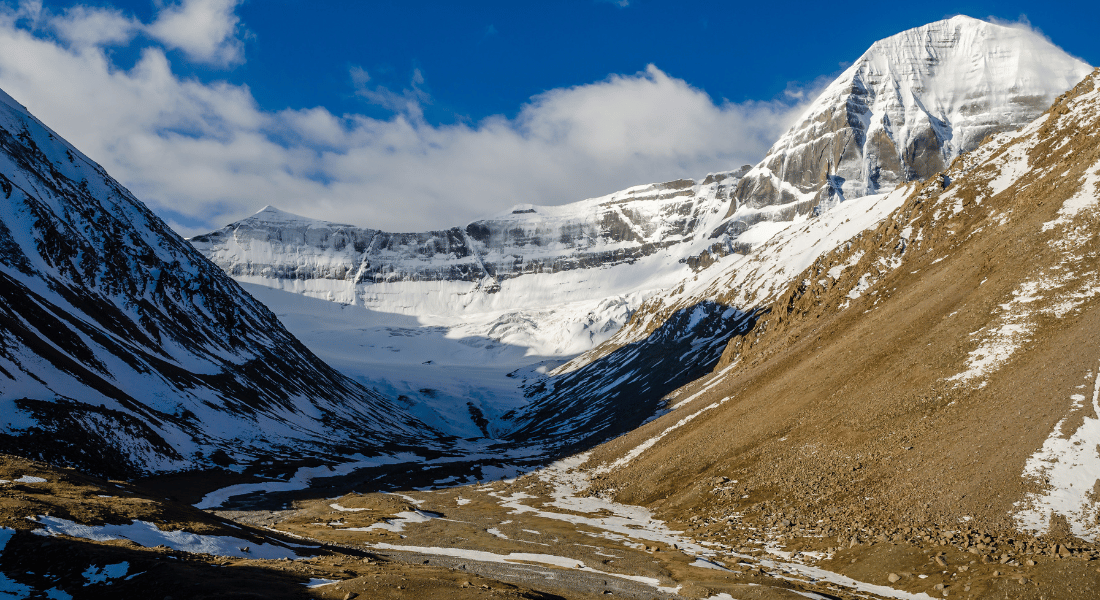
Charan Sparsh, a revered practice, is also involved in this journey, which needs an extra 7 KM of trek from Derapuk, for which one should pass through isolated paths with a continuous ascent for 4 to 5 hours, making it difficult for the pilgrims to walk in the high altitude. Travellers will find the journey from Derapuk to Zutulpuk equally challenging due to the Sangla ma Pass, which is situated at an altitude of 5680m. Additionally, the weather conditions add to the challenges of the journey, which are unpredictable most of the time due to its location. It can invite sudden raindrops and snow showers. The Kailash Inner Kora continues to attract daring and spiritual minds despite the difficulties it poses, providing a unique feature of the Kailash Yatra.
Inner Kora vs Outer Kora
Kora is a type of pilgrimage or meditative practice performed by making a circumambulation around a sacred object or site. Likewise, Kailash Kora is an act of circling around Mount Kailash for spiritual gain or benefit. There are two ways pilgrims follow for Kailash Kora: inner and outer. While Outer Kora, being the more popular one, is the regular parikrama of the Kailash around the base of the mountain, Inner Kora takes you to the path beyond the regular route, offering a more intimate connection with nature's spiritual energy.
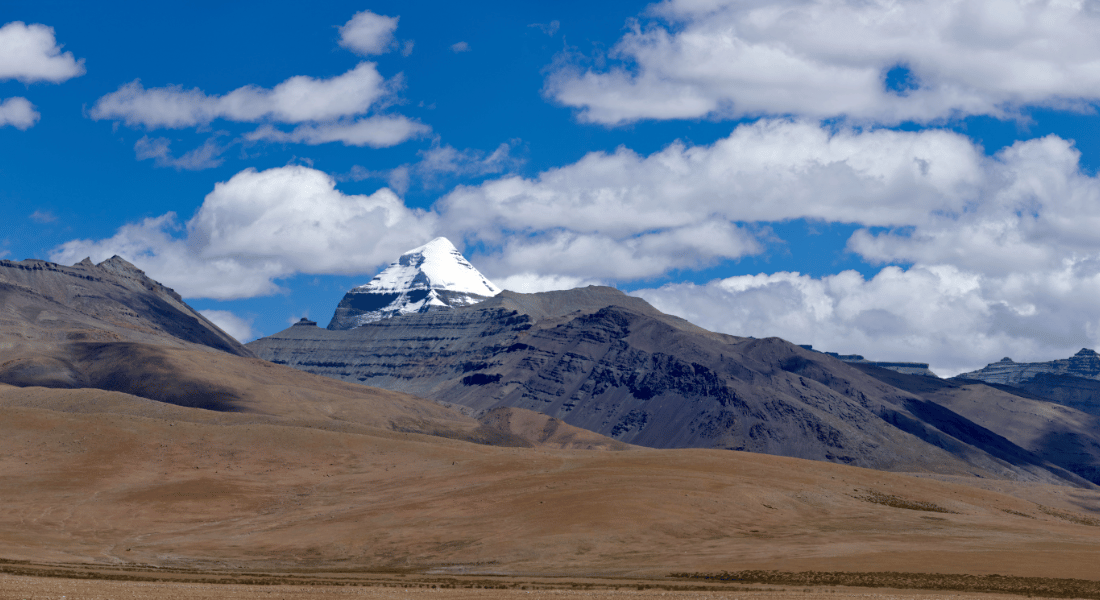
The regular outer Kora is a 52 KM journey starting from Darchen, following the route towards Yamadwar, Derphuk, and Zuthulpuk via Dolma La Pass, and finally back to Darchen. This pilgrimage journey is considered not that difficult compared to the outer Kora, except crossing the high-altitude pass Dolma La Pass (5600 m). Meanwhile, the inner Kora is a 32 KM journey starting from Darchen, following the route towards Yamadwar, Deraphuk, and Zuthulpuk via Sanglama La/Sin La Pass (5680 m) and finally back to Darchen. This route comparatively is considered very strenuous, as one has to continuously walk upwards for about 4-5 hours above 5000 m. As the inner Kora takes you closer to Mount Kailash than the outer Kora, it lets you feel the intimate connection to the divine while also touching the feet of the mountain on the northern side. All in all, the Outer Kora, being comparatively easier than the Inner Kora, is more popular among the pilgrims, making it accessible for a wider range of devotees seeking spiritual gain.
Learn About: Lake Mansarovar Versus Rakshastal
Kailash Inner Kora Package
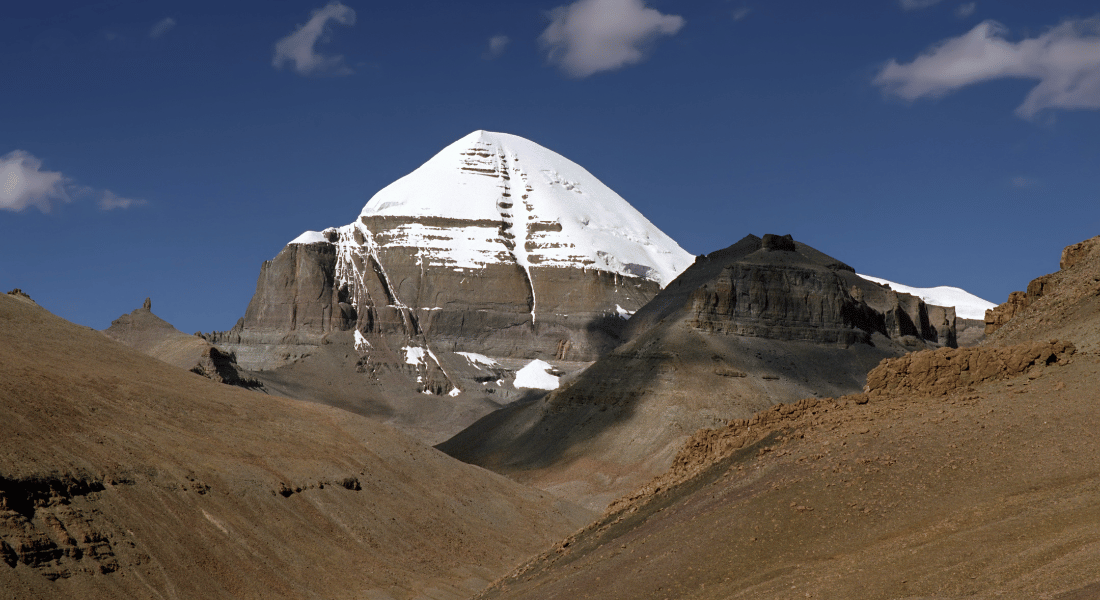
The Kailash Inner Kora Tour takes you beyond the usual pilgrimage route to the inner parikrama, a profound and difficult trek that circles the inner sanctum of the majestic Mount Kailash. It is meant solely for people who want to become closer to the divine and the holy. From Nepal's Kathmandu and Bhaktapur to Tibet's Mansarovar Lake and Mount Kailash. In addition to Ashtapad, Saptarishi Cave, Derapuk, Sin La Pass, and Zuthulpuk, it also has Charan Sparsh in between. Here’s an outline itinerary provided for it:
Outline Itinerary
|
DAY 1: Kathmandu Arrival. |
|
DAY 2: Visa Application, Kathmandu Sightseeing. |
|
DAY 3: Bhaktapur Sightseeing. |
|
DAY 4: Packing and Final Preparation. |
|
DAY 5: Drive to Dhunche, Syabrubesi, or Timure. |
|
DAY 6: Drive to Kyirong. |
|
DAY 7: Drive to Saga. |
|
DAY 8: Drive from Saga to Lake Mansarovar. |
|
DAY 9: Drive to Darchen. |
|
DAY 10: Drive to Ashtapad, Saptarishi Cave, Back to Darchen. |
|
DAY 11: Trek to Derapuk via Yama Dwar. |
|
DAY 12: Trek for Charan Sparsh, Back to Derapuk. |
|
DAY 13: Trek to Zuthulpuk via Sanglam La/Sin La Pass. |
|
DAY 14: Trek from Zuthulpuk, Drive to Saga. |
|
DAY 15: Drive to Kyirong. |
|
DAY 16: Drive back to Kathmandu. |
|
DAY 17: Departure, Farewell! |
Learn More: Kailash Inner Kora Tour
Apart from the Inner Kora, we also provide the Outer Kora tour packages, which are popular among the pilgrims around the world. Some of our recommended packages are:
Kailash Inner Kora Travel Tips
Before you undertake the extraordinary Kailash inner Kora, you will need to be prepared both physically and mentally, as making the travel experiences excellent takes a lot more than just attractions. There are various things that play a supporting role to make your journey better and to make that here are some preparation tips for the pilgrims.
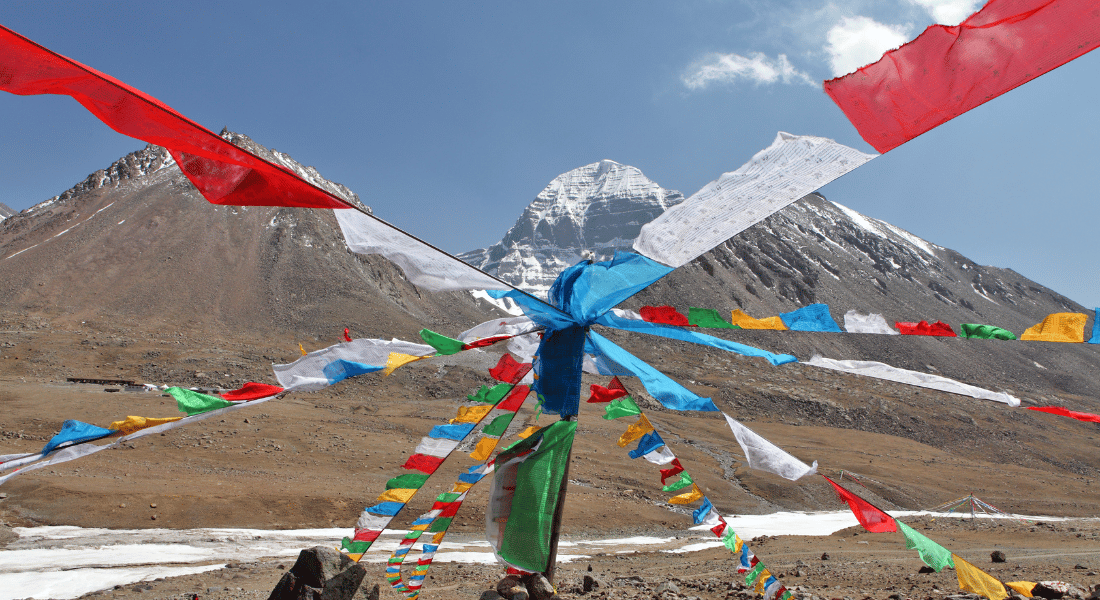
Altitude Sickness
When travelling to higher altitude destinations, altitude sickness is a common concern but the most dangerous one as well. This Kailash Inner Kora takes you to an altitude as high as 5680 m in the Sin la pass and you need to walk continuously for 4 to 5 hours in the higher elevations of about 5000m so acclimatization is crucial. Constant hydration, gradual accent, carrying high-altitude medication, and energy bars become a necessity. Most importantly, one must always listen to their body.
Packing List
From clothes to gear to other spiritual items, everything needs to be packed smartly. Pack lightweight, moisture-wicking clothing, sturdy hiking boots, a high-altitude sleeping bag, trekking poles, a headlamp, and a portable water filter. For health, carry Diamox for altitude prevention, a first-aid kit, sunscreen, and high-energy snacks like nuts and protein bars. The above are the essentials that keep you safe during your yatra.
Learn More: Kailash Mansarovar Yatra Packing List Suggestion
Cultural Etiquette
The Kailash Kora is a sacred pilgrimage for many religions and it's very much important to respect each other's cultures and traditions along the way. With the Kora, as you will pass by various villages, monasteries, and chortens, always be respectful towards it. Also, you need to be mindful of their customs and spiritual beliefs.
Learn More: Kailash Yatra Preparation
Conclusion
The Kailash Mansarovar region of the remote Tibetan Himalayas is deeply rooted in its spiritual and religious connection to the divine. The region consists of the mighty Mount Kailash, vast Lake Mansarovar, and various other pilgrimage sites, like monasteries and chortens, attracting pilgrims here to perform various rituals, including the Kailash Kora. Participating in the Kailash Parikrama, be it the Inner or Outer, is believed to cleanse one's sins and provide a path to liberation. The outer one, being more famous, is comparatively easier and attracts a diverse number of travellers. In contrast, the Kailash inner Kora, being more challenging, is not for the fainthearted; however, it is much more rewarding.
Kailash Inner Kora is not only for those who want to get closer to the divine; it is also for those who are willing to face the various difficulties involved in the yatra. The article “Kailash Inner Kora” serves as a humbling reminder that the path to enlightenment is never easy; there are various challenges one must conquer, and it is the faith, devotion, and belief that gives a deeper sense of purpose. By the end, it encourages and inspires the readers to participate in the yatra not just because of the spiritual benefit but for personal growth as well.

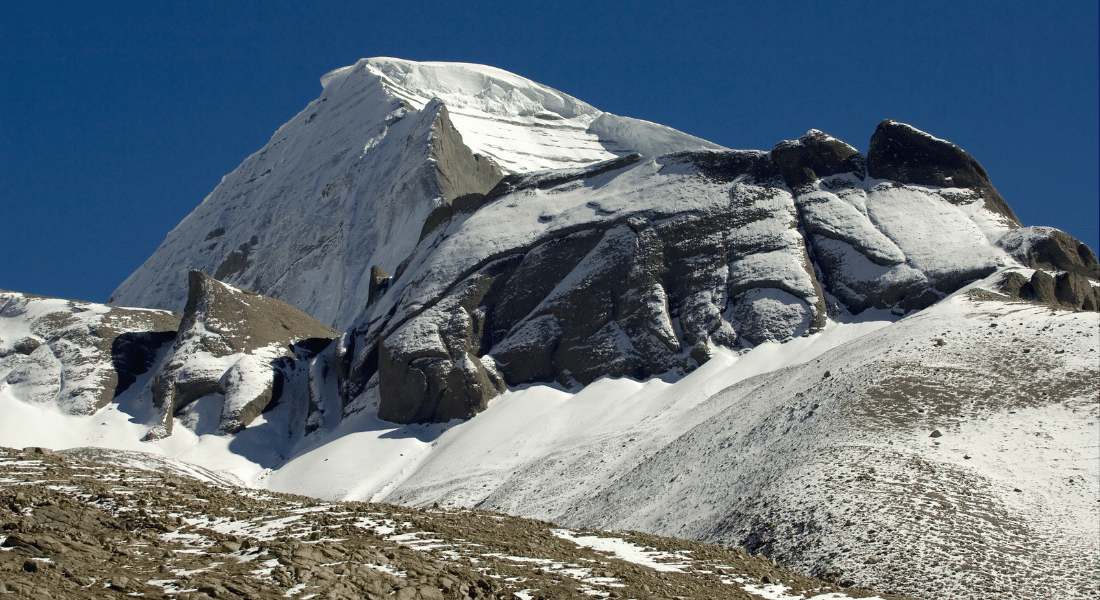
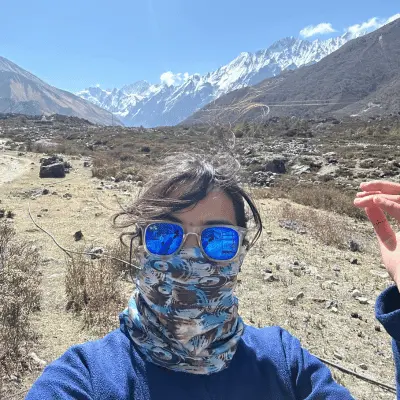 Mandira Itani
Mandira Itani